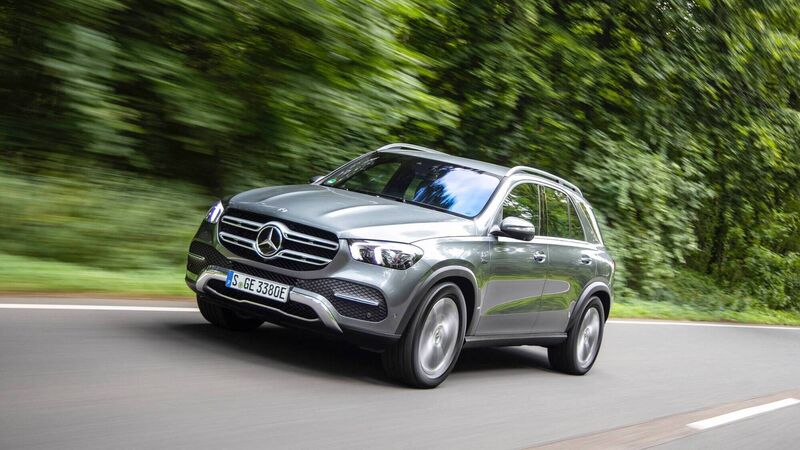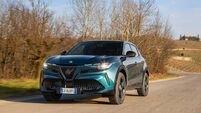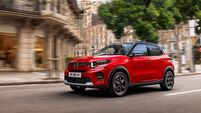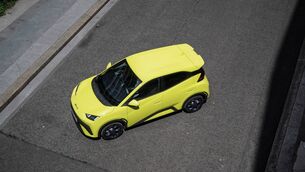Mercedes GLC 300 de: A truly switched on hybrid SUV

This week’s tester is the GLC 300de 4Matic, although Mercedes is also offering a petrol-electric PHEV in the GLC, so it seems the company is covering as many angles as is possible in the race for sales
|
Mercedes GLC 300 de |
|
|---|---|
|
|
★★★☆☆ |
|
|
€ 62,300 - €62,843 as tested |
|
|
Solid diesel back with an electric motor |
|
|
Comprehensive |
|
|
Outstanding in its' own field - but how long that field will be with us remains to be seen |
Discussing the merits and demerits of Plug-In Hybrid motoring recently among friends, someone asked if, in ten years or so, the world would scratch its collective head trying to remember what it was that PHEV stood for.
The suggestion provoked a host of positive murmurs as people reflected on the probably short life of such vehicles and their general impact on motorists and the world at large.
One person even went as far as to suggest that he had been recently suckered by the relative tax-friendliness of the PHEV and had invested in a Range Rover of that ilk. He suggested that he had been lucky in one way and stupid in another.
Lucky, in that he bought the car before July 1 last when the government subsidy for purchasing a new PHEV dropped from €5,000 to €2,500. Stupid, because he bought a car which was largely used for long-distance travel and which had an electric-only range of about 50 km, meaning that for much of the time the petrol engine was forced to haul around a bunch of heavy batteries that contributed nothing to progress and did even less for the consumption figures.
Now, said chap loves his Range Rover to bits, but he readily conceded that the PHEV was the wrong choice for him, despite whatever tax benefits he may have enjoyed. He also conceded that while it was still possible to buy a petrol or diesel option, that is what he should have done and sod the tax break.
With grave uncertainly hanging over what the EU will do with regard to what it says is “a transition technology” on the road to zero-emission motoring and to reach an overall climate-neutral target – which the bloc wants to achieve by 2050 – the future of the PHEV is looking bleak.
Draft EU regulations proposed banning manufacturers making PHEVs from labelling them as “sustainable investments” from 2025. The aim is to speed up the electrification of the auto industry to meet climate goals, but with the industry having invested billions in developing these cars, the planned new rules are not sitting easy among carmakers.

But, here in Ireland, with thus far a relatively meagre 7% of total sales being taken up by PHEVs, the car companies reckon that there is still plenty of punters out there who will take any tax break going and will use this genre of car to lessen their company car tax burden.
Mercedes has not yet become as big a player in this area as some in the premium segment – BMW and Volvo lead the way here – but it wants more of the action and we have already seen the German giant get into this sphere with their E300de saloon. Now they’re taking aim at the SUV market.
This week’s tester is the GLC 300de 4Matic, although Mercedes is also offering a petrol-electric PHEV in the GLC, so it seems the company is covering as many angles as is possible in the race for sales. And so, for those wanting a car that will do around 45 km only on electric power, but want the efficiency of diesel for longer trips, then this is just the thing.
We have long been an admirer of the GLC as a practical upmarket SUV and one which probably fights above its weight, even against its main German rivals from Audi and BMW – the Q5 and the X3 respectively.
This is a car which is set to be replaced completely in 2023 and was facelifted in 2019 and it is also one that has been available on continental Europe for many years but is only now being brought to these shores. Quite why it has taken so long is a question only Mercedes can answer, but I suspect the company viewed a paucity of demand on the Irish market as being a big no-no.
But now that the public’s attitude has navigated its way towards a greater desire for all things electric – be it hybrid, PHEV or pure electric, things have changed and all of a sudden cars such as this have a more viable future.
The main thing for potential PHEV owners is that they will have to buy into the whole experience if they are to maximise not only their enjoyment of the car but their utilisation of its abilities. Otherwise, they would simply be as well off paying a lot less money and getting into a GLC 200d.
For those who ‘get’ the whole idea behind these vehicles, it is possible to manage your daily commute (if you have one post-pandemic) so that you run on electric-only for a majority of those short distances and then when you have to go further afield, you can extrapolate the benefits of the diesel end of things to exploit the consumption rate that offers.

It is a juggling act and you do have to pay a lot more attention to what’s going on with both the 1,950cc four-cylinder engine with 194 bhp as well as the 122 bhp electric motor. The combination of these makes for a fleet 6.2 second 0-100 km/h dash and a top speed of 230 km/h.
Now while Mercedes claim a combined fuel consumption rate of 1.8-2.0 l/100 km (140 mpg),m the reality here is that if you were to achieve an average – as we did – a figure of 4.1 l/100 km (68.2 mpg) you be feeling pretty good about yourself – and your car.
Worth noting too is that the instrumentation offers plenty of information on battery status and range, while the driving settings can be mixed and matched to garner improved performance. The car’s systems will also offer tips on how to adapt your driving style, so it’s not all guesswork.
As it is, the mechanical package offers a sterling driving experience. It is quick enough to satisfy most tastes (remembering, of course that a lighter foot is the best course of action here if you want to satisfy your economic ambitions), rides really well, handles more like a saloon than a SUV and is firmly insulated against wind and tyre noise, as well as any grumbling from under the hood.
The interior is a paragon of style and the mix of AMG Line exterior and Exclusive Line interior as tested will appease most punters. The look is bearing its age well and this GLC still looks fresh and appealing.
Standard kit levels are impressive too and the MBUX multimedia system is a treat to use and live with. Two small quibbles, however: there’s no spare wheel and the lane change warning system has to be turned off every time you get into the car. Rural dwellers, in particular, will find both these issues to be extremely irritating.
So, this is a very workable – if a tad expensive – car and while PHEV technology is still seen as a transition technology which will ultimately lead you to the full electric experience, it might not be so for much longer, depending on what the Mandarins in Brussels decide in the coming months.
It is worth remembering too that Mercedes now has an all-electric range and we will be trying one of them – the EQA – in these columns very soon. For now though, the GLC 300de is among the best in the business of the PHEV brigade.
But whether we will remember in ten years’ time what it was that PHEV stood for, remains to be seen.





